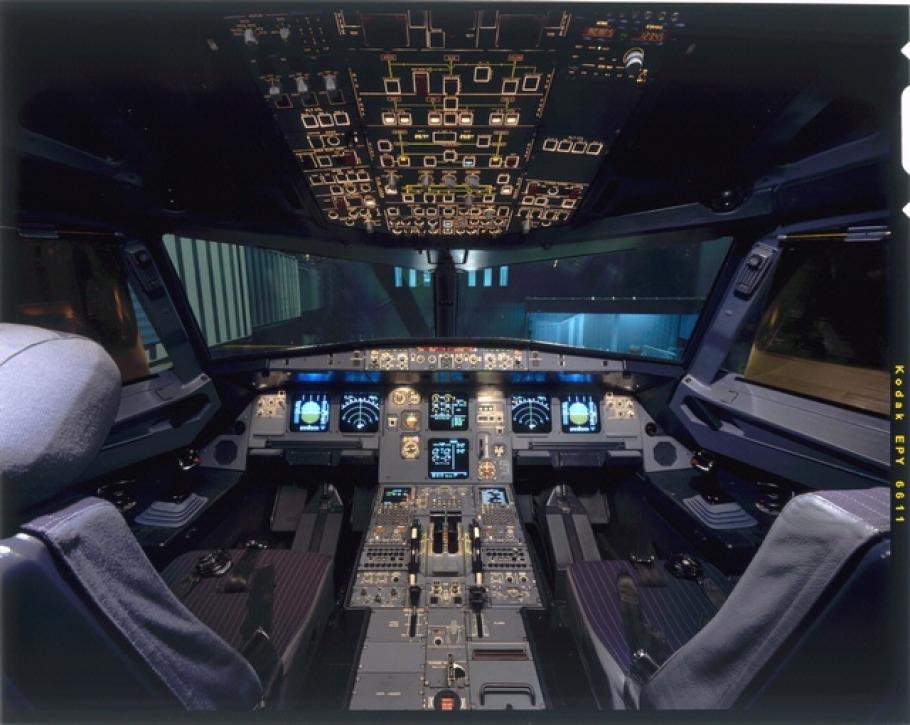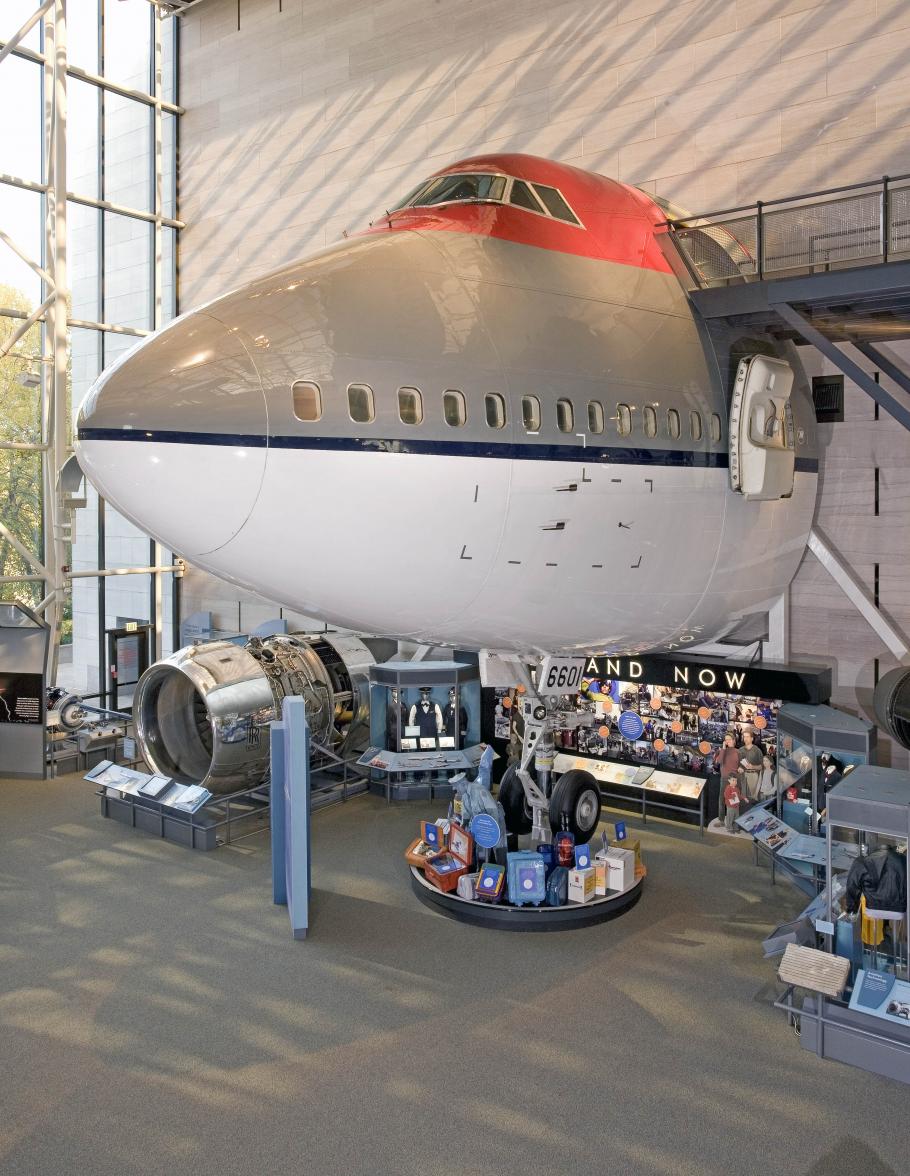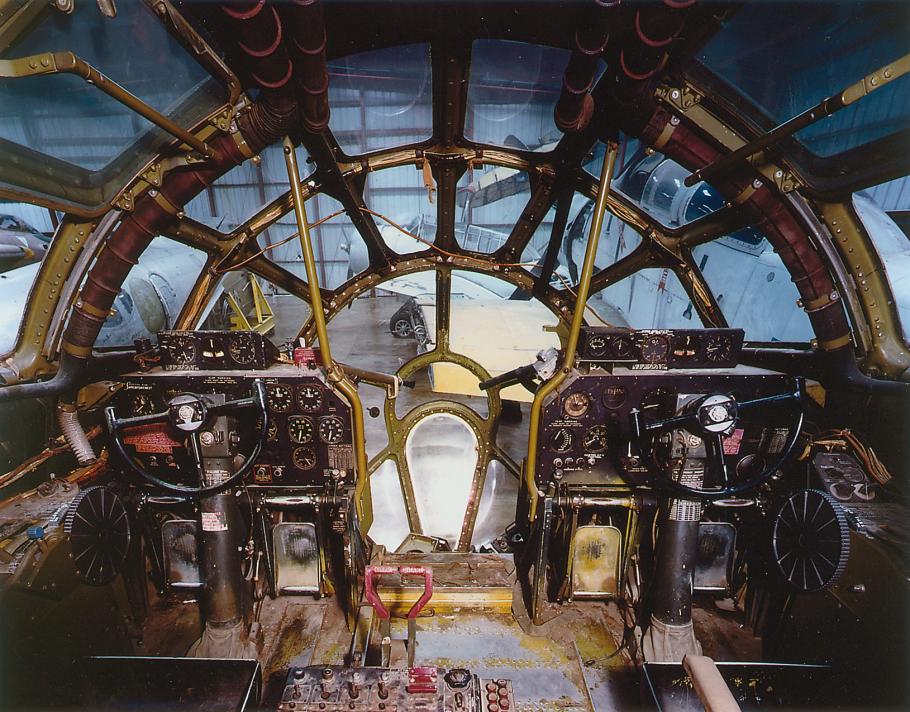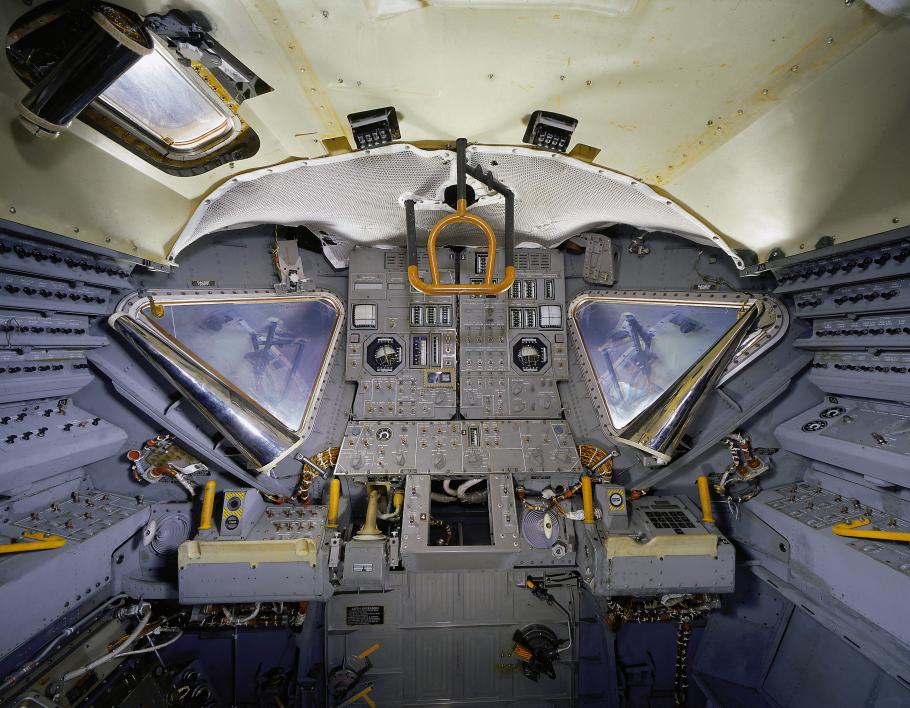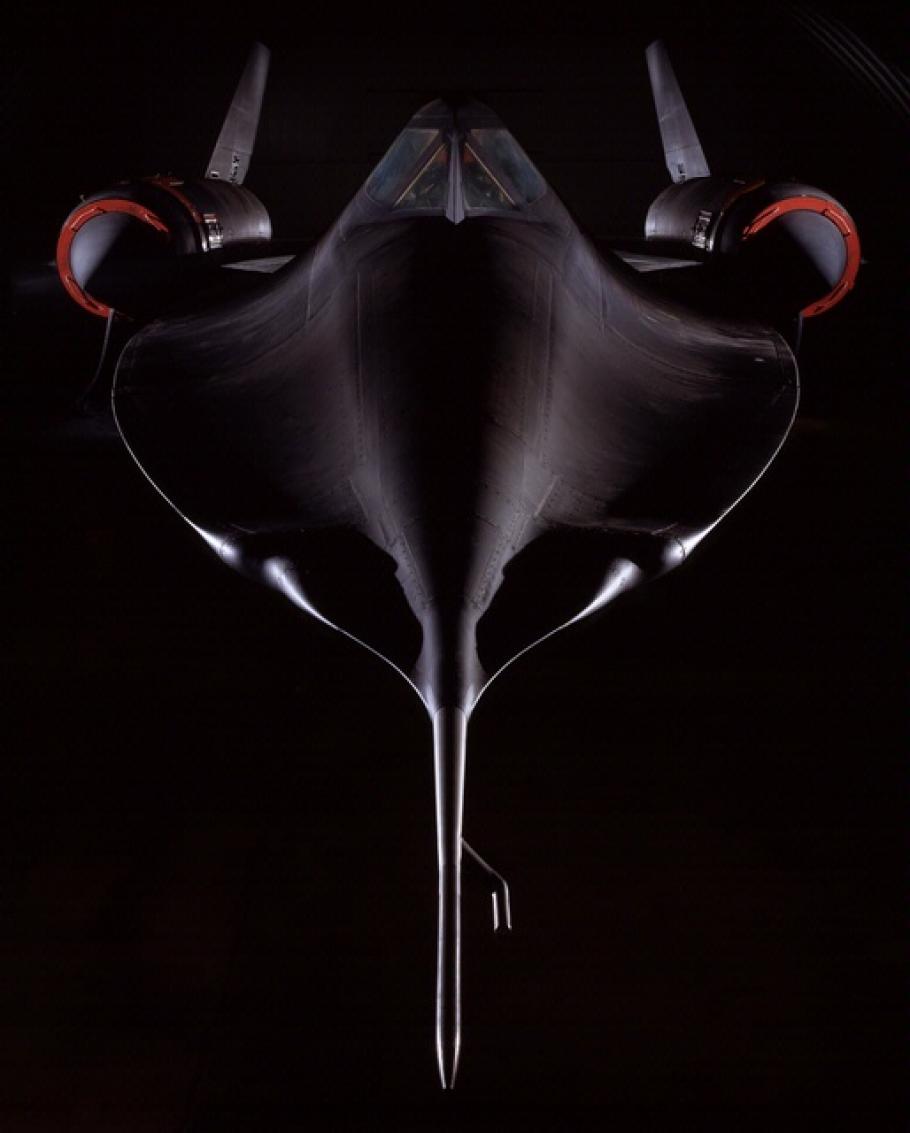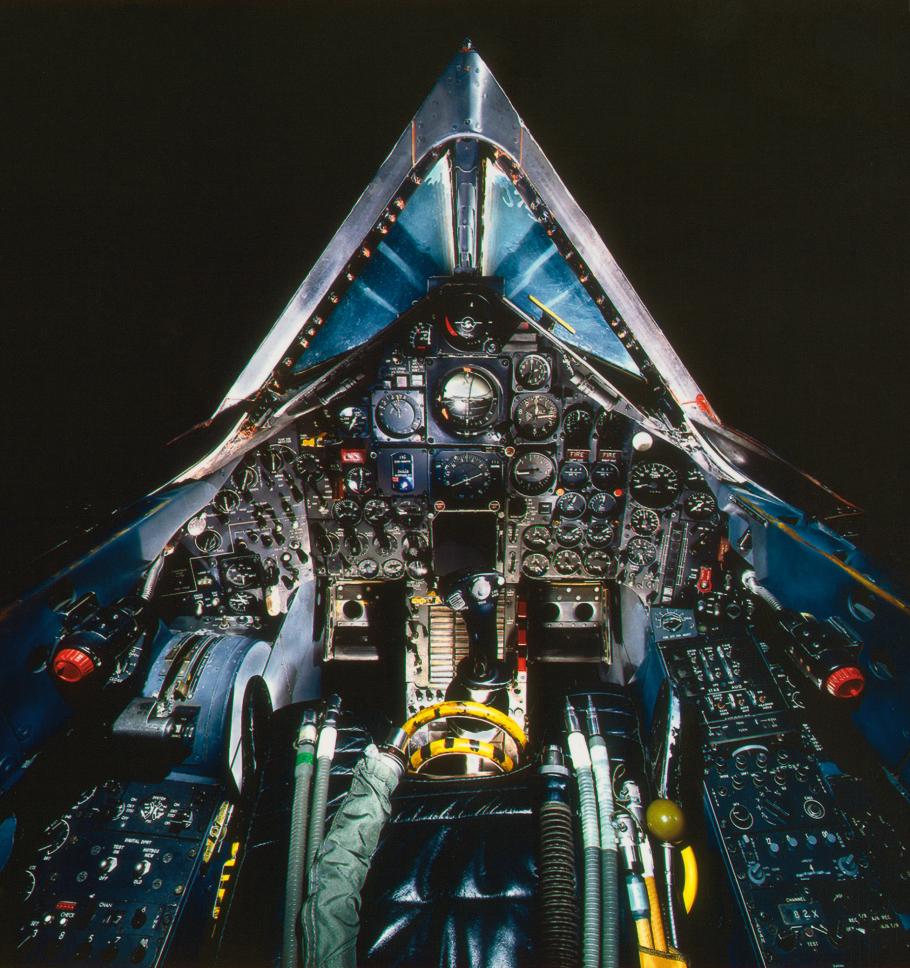Many visitors express the wish to see the interiors of aircraft and spacecraft on display in the Museum. But to protect these historic treasures, they must be displayed behind barriers, which makes it impossible to see inside. But there are several cockpits you can see in the Museum, a day devoted to getting up close with aircraft, some cool electronic views, and a couple of great books that give those who are curious some excellent interior views. In the National Mall building visitors can see an authentic reproduction of an Airbus A320 “glass cockpit.” Here, you can experience a take-off and landing at Washington Reagan National Airport as if you were a commercial airline pilot. The simulator is on view in the America by Air gallery.
The A320 was the first airliner equipped with a glass cockpit and digital fly-by-wire flight controls, which provide more information to the pilot while enhancing safety and efficiency.
In the same exhibition are two more cockpits on view. One is the first Boeing 747-151 ever flown by Northwest Airlines. Accessible from a walkway on the second floor, you can enter the forward section and see the cockpit and its over 600 buttons, switches, and knobs. The second is a 1950s-era American Airlines Douglas DC-7 on the main floor, which offers a view of the cabin as well as the cockpit. The contrast between these two aircraft is striking!
This nose section is from a Northwest Airlines Boeing 747-151, which visitors can enter from the second floor. Beneath it is an interactive luggage carousel, displays of flight memorabilia and photos representing "Then and Now," and jet engines.
At the Udvar-Hazy Center, there is a view of the nose and cockpit of the B-29 Superfortress Enola Gay, which dropped the first atomic bomb in combat on Hiroshima, Japan during World War II, a Cessna airplane that kids can sit in, and a space shuttle simulator.
The historic Boeing B-29 Enola Gay is shown here just after being restored and re-assembled in 2003. The airplane, which received the most extensive restoration in the museum's history, is on display at the Steven F. Udvar-Hazy Center.
Boeing's B-29 Superfortress was the most sophisticated propeller-driven bomber of World War II, and the first bomber to house its crew in pressurized compartments.
Most space capsules on display allow great up-close views inside. For instance, you can get nose-to-nose with the cockpits of three capsules in the National Mall building’s Milestones of Flight gallery: Apollo 11, Mercury Friendship 7, and Gemini IV. In Apollo to the Moon is a full-size simulator of the Apollo lunar module cockpit where you can experience the minute-by-minute thrill of landing on the Moon.
The control panels and triangular windows inside Lunar Module 2.
Another chance to see cockpits is at the annual Innovations in Flight Family Day at the Udvar-Hazy Center, held this year on June 19. Over 50 aircraft fly in for the occasion, and you can walk right up to view, and sometimes sit in, the cockpits. Several cockpits that can’t be viewed in person are available on the Museum’s web site in Quick Time Virtual Reality format. These include the Concorde and the Lockheed SR-71 Blackbird. Check them out here. And next time you’re at the Udvar-Hazy Center, look for the computer kiosks throughout the Center that offer 360 degree views of many airplane interiors and cockpits.
The Lockheed SR-71 Blackbird in a storage hangar at Dulles International Airport before transport to the Steven F. Udvar-Hazy Center.
The Blackbird's cockpit was a tight fit for the crew, who wore bulky pressure suits during each mission.
Finally, you can look at an incredible array of striking cockpit photos in two books written and photographed by Museum staffers. In the Cockpit: Inside 50 History-Making Aircraft, and In the Cockpit II: Inside History-Making Aircraft of World War II, provide close-up access to the instrument panels and controls of aircraft in the Museum’s impressive collection. Both books are available at the smithsonianstore.com, in person at the Museum Stores, or by calling 202-357-1387 to have one mailed. Maybe if you buy one for your Dad for Father’s Day he would let you read it!
